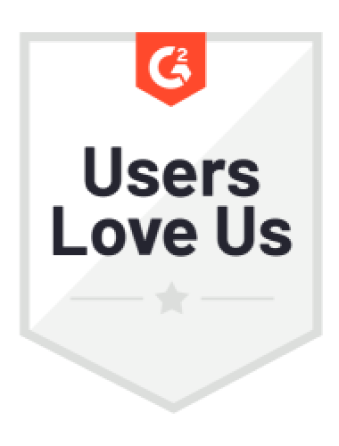Leveraging AI for Google Analytics Interaction: Natural Language Interfaces for Web Analytics
Discover how leveraging AI for Google Analytics interaction through natural language interfaces can revolutionize web analytics.
In today's data-driven world, understanding user behavior is essential for businesses to thrive and succeed online. Google Analytics has long been the go-to tool for web analytics, providing valuable insights into website performance and user interactions. However, as technology evolves, so does the need for more intuitive and efficient ways to interact with this wealth of data. This is where the power of Artificial Intelligence (AI) comes into play, revolutionizing the way we interact with Google Analytics through Natural Language Interfaces (NLIs).
Understanding the Intersection of AI and Google Analytics
AI and Google Analytics may seem like two distinct areas of expertise, but their intersection brings forth exciting possibilities for businesses seeking to better understand their online presence. AI refers to the simulation of human intelligence in machines that are programmed to think and learn like humans, enabling them to perform tasks that previously required human intervention. Google Analytics, on the other hand, is a powerful web analytics platform that provides businesses with insights into their website's performance and user behavior.
When AI and Google Analytics converge, the process transforms into a seamless and intuitive experience for users. Rather than spending hours combing through complex data sets and generating reports, businesses can now utilize NLIs to have natural language conversations with Google Analytics and extract valuable insights effortlessly.
The Role of AI in Web Analytics
AI has emerged as a game-changer in the world of web analytics, offering a multitude of benefits to businesses. One of AI's primary roles in web analytics is to assist in data analysis and interpretation. By utilizing machine learning algorithms, AI algorithms can identify patterns, correlations, and trends within vast amounts of data. This enables businesses to uncover invaluable insights that may have otherwise remained hidden.
Moreover, AI can automate the process of data collection and reporting, reducing manual effort and improving efficiency. With the ability to continuously analyze and monitor data in real-time, AI-powered analytics tools ensure that businesses are always up-to-date with the latest trends and changes in user behavior.
Furthermore, AI can also enhance the accuracy and reliability of web analytics by minimizing human error. Traditional web analytics methods often rely on manual data entry and interpretation, which can introduce inaccuracies and inconsistencies. AI algorithms, on the other hand, can process data at a much faster pace and with a higher level of precision, ensuring that businesses have access to reliable and actionable insights.
Google Analytics: A Brief Overview
Before delving into the integration of AI and Google Analytics, it's essential to have a firm grasp of what Google Analytics offers. Google Analytics is a comprehensive web analytics tool that enables businesses to track and measure their website's performance. It provides a wide range of metrics and dimensions that help businesses gain insights into how their website is performing. This includes information on user engagement, traffic sources, conversion rates, and more.
With its user-friendly interface and customizable reports, Google Analytics has become indispensable for businesses of all sizes, offering valuable information that shapes their digital marketing strategies and website optimization efforts.
Furthermore, Google Analytics offers advanced features such as goal tracking, e-commerce tracking, and audience segmentation. These features allow businesses to set specific objectives, track online sales, and analyze user behavior based on different segments. By leveraging these capabilities, businesses can gain a deeper understanding of their target audience and tailor their marketing efforts accordingly.
The Emergence of Natural Language Interfaces
As technology advances, the demand for more intuitive and user-friendly interfaces continues to grow. This is where Natural Language Interfaces (NLIs) come in. NLIs allow users to interact with technology using everyday language, making complex tasks more accessible and reducing the learning curve associated with sophisticated tools and systems.
Imagine a world where you can simply ask your computer a question, just like you would ask a friend, and receive a meaningful response. NLIs leverage AI techniques, such as natural language processing and understanding, to enable users to communicate with computer systems in a conversational manner. Instead of relying on rigid commands or complex queries, NLIs offer a more natural and intuitive way of interacting with technology.
With NLIs, users can pose questions or make requests using plain language, and the system responds accordingly. Whether you want to know the latest sales figures, analyze customer behavior, or explore market trends, NLIs are designed to understand your intent and provide you with the information you need. This eliminates the need for extensive training or technical expertise, giving users the power to extract insights from complex data sets without the hassle.
Defining Natural Language Interfaces
Let's dive a bit deeper into the inner workings of NLIs. These innovative interfaces rely on a combination of machine learning algorithms and linguistic analysis to decipher and interpret human language. By breaking down sentences into their constituent parts, NLIs can understand the meaning behind the words and generate accurate responses.
But NLIs go beyond simple keyword matching. They employ advanced techniques, such as semantic analysis and context understanding, to grasp the nuances of human communication. This allows NLIs to understand not only the literal meaning of your words but also the underlying intent behind them. So, whether you ask a question directly or express it in a more indirect manner, NLIs can still provide you with relevant and meaningful answers.
The Impact of Natural Language Interfaces on Web Analytics
Integrating NLIs with web analytics, such as Google Analytics, has profound implications for businesses. NLIs democratize access to data and insights, allowing individuals from various departments and skill levels to tap into the power of analytics. Marketers, managers, and executives no longer have to rely solely on data analysts or specialists to gather and interpret data; they can directly converse with NLIs in plain language, obtaining the desired information in real-time.
Imagine being a marketing manager who wants to understand the performance of a recent ad campaign. Instead of spending hours poring over complex reports and spreadsheets, you can simply ask the NLI, "How did our recent ad campaign perform?" The NLI will analyze the relevant data, provide you with key metrics, and even offer insights on customer engagement and conversion rates. This democratization of data empowers businesses to make data-driven decisions more efficiently.
No longer bound by the limitations of traditional interfaces, NLIs offer a user-friendly and conversational experience that engages users and encourages exploration of data further. With NLIs, you can have a dynamic conversation with your analytics platform, uncovering hidden patterns, identifying trends, and gaining valuable insights that can drive your business forward. So, embrace the power of Natural Language Interfaces and unlock the true potential of your data.
The Integration of AI and Google Analytics
As the demand for more intuitive and efficient ways to interact with data grows, the integration of AI and Google Analytics has become imperative. AI adds a layer of intelligence and automation to Google Analytics, enhancing its capabilities and making it more accessible to users.
How AI Enhances Google Analytics
By leveraging AI, Google Analytics can process and analyze vast amounts of data at an unprecedented speed. It can identify trends and patterns, highlight anomalies, and provide users with actionable insights in real-time. Through machine learning algorithms, AI can even predict future trends and recommend optimal strategies for businesses.
Furthermore, AI-powered NLIs have transformed the way users interact with Google Analytics. Instead of navigating complex menus and settings, users can engage in a natural language conversation, effortlessly extracting the desired insights from their data. This streamlines the analytics process, saving time and effort while increasing user satisfaction.
Challenges in Integrating AI with Google Analytics
While the integration of AI and Google Analytics brings immense value, it is not without its challenges. One of the primary concerns is data privacy and security. As AI relies heavily on data, businesses must ensure that user data is protected and handled ethically.
Additionally, the potential for misinterpretation or biased analysis is a critical consideration when incorporating AI in analytics. Careful scrutiny and validation of AI algorithms are essential to ensure the accuracy and fairness of the insights generated.
Future Trends in AI and Web Analytics
The rapid advancement of AI promises exciting developments in web analytics, paving the way for more intelligent and intuitive systems. The following are some predicted trends that we can expect in the near future:
Predicted Developments in AI for Web Analytics
AI-powered predictive analytics: As AI systems learn from historical data, they can make accurate predictions about future user behavior. This enables businesses to anticipate trends and take proactive measures to optimize their website and digital marketing efforts.
Automated anomaly detection: AI algorithms can detect anomalies or aberrations in user behavior, enabling businesses to promptly address any issues or anomalies that may arise.
Enhanced personalization: AI enables businesses to deliver personalized experiences, tailoring content and recommendations based on each user's preferences and behavior. This enhances user engagement and drives conversion rates.
The Potential of AI in Transforming Google Analytics
With AI's potential to revolutionize web analytics, the future of Google Analytics looks promising. Enhanced AI capabilities will further simplify and streamline data analysis and reporting, providing businesses with deeper insights and actionable recommendations.
AI might also enable Google Analytics to move beyond descriptive analytics, empowering businesses with prescriptive and cognitive analytics. This means going beyond simply understanding what happened and why it happened and moving towards making intelligent recommendations on what actions to take in response to the insights gained.
Conclusion: The Power of AI in Google Analytics Interaction
The integration of AI and Google Analytics through NLIs marks an exciting milestone in web analytics. By leveraging AI's power, businesses can unlock the true potential of their data and gain actionable insights effortlessly.
Key Takeaways: AI and Google Analytics
- AI enhances Google Analytics by processing vast amounts of data, providing real-time insights, and enabling natural language conversations.
- NLIs democratize access to data, making analytics more accessible and user-friendly for individuals with varying skill levels.
- The future of AI and web analytics holds promises, including predictive analytics, automated anomaly detection, and enhanced personalization.
Final Thoughts: The Future of AI and Google Analytics
As AI continues to evolve, we can expect even more exciting developments in the realm of web analytics. With AI-powered NLIs at the forefront, businesses will gain unprecedented agility and efficiency in harnessing data, ultimately driving growth and success in the digital landscape.
Ready to transform your Google Analytics experience with the power of AI? CastorDoc is here to elevate your data interactions to new heights. As the most reliable AI Agent for Analytics, CastorDoc empowers your team to obtain trustworthy, instantaneous data answers, enabling you to tackle strategic challenges with confidence. Embrace the future of web analytics with a platform that offers self-service analytics, breaks down data literacy barriers, and maximizes your data stack's ROI. Don't let complexity hold you back. Try CastorDoc today and start making informed decisions that drive your business forward.
You might also like
Get in Touch to Learn More



“[I like] The easy to use interface and the speed of finding the relevant assets that you're looking for in your database. I also really enjoy the score given to each table, [which] lets you prioritize the results of your queries by how often certain data is used.” - Michal P., Head of Data




.png)
%202.png)

%202.png)

%202.png)
%202.png)
%202.png)

%202.png)


%202.png)

%202.png)


.png)

